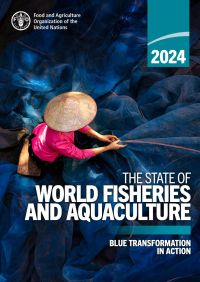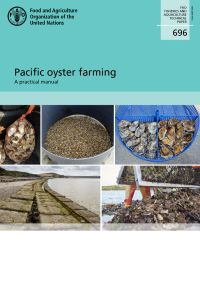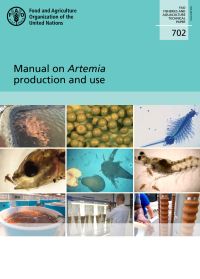This manual covers everything from grass carp's natural distribution and reproductive behaviours to its biology and anatomy. This manual also explores diseases that can affect grass carp and emphasises the crucial connection between animal welfare and stress in fish. With a detailed discussion on cultivation systems, this manual includes pond structures and fish farming techniques in both polyculture and monoculture. It provides practical insights into important aspects such as water quality monitoring, feeding, nutrition, health checks and behaviour assessments at every stage of grass carp farming – from broodstock management to pre-slaughter and slaughter processes. The emphasis is on responsible harvesting techniques, transportation considerations and humane slaughter methods. This manual offers a comprehensive guide for both novice and experienced fish farmers, and enthusiasts interested in cultivating grass carp sustainably and ensuring optimal animal welfare.
The 2024 edition of The State of World Fisheries and Aquaculture provides updated global production statistics for fisheries and aquaculture, and an outlook on future trends up to 2032 based on projections. It also highlights key policy issues, scientific and technical insights, challenges, opportunities and innovations shaping the present and future of the sector. This issue features Blue Transformation in action, illustrated by activities and initiatives, led by FAO in collaboration with Members, partners and key stakeholders, to integrate aquatic foods into global food security and sustainability, enhance policy advocacy, scientific research and capacity building, disseminate sustainable practices and technological innovations, and support community involvement.
The purpose of this manual is to give the reader a foundation of practical knowledge regarding all aspects of Pacific oyster cultivation. It is targeted at new entrants to the market wishing to establish a farm, and existing operators who wish to develop their farms and explore new cultivation techniques. The methodologies described can be applied to both low-tech, low budget, small-scale farming operations and to high-tech, big budget, industrial-scale aquaculture production enterprises. This guide focuses on the functional expertise and technical equipment required to construct and manage an operational farm in the diverse environmental and physical locations in which they can be situated, from the initial stages of finding and selecting a suitable site, to the conclusion of the first production cycle and harvesting the crop.
This FAO publication on brine shrimp is a manual for all those who are using Artemia or have an interest in this organism, whether as a source of live food in the hatchery, as a model organism in research, or for other purpose. It is intended for those who wish to update their knowledge on its biology, production or its use, but also for those who want to learn about Artemia for the first time. This manual presents in a concise form essential information on Artemia biology and the most important natural cyst resources that find their way to the aquaculture market. It also provides detailed information on general principles and practical procedures to produce Artemia in ponds and in tank systems. Finally, the manual offers a compilation of state-of-the-art guidelines and methodologies related to the use of this crucial live food organism in aquaculture.
With the implementation of the new aquatic animal disease reporting in the Asia Pacific region from January 2021, and in lieu of the published QAAD Reports (last issue published was 4th quarter of 2020), NACA is publishing reported aquatic animal diseases submitted by countries in the Asia-Pacific region. This report covers the fourth quarter of 2023 and the original and updated reports can be accessed from the QAAD page.



